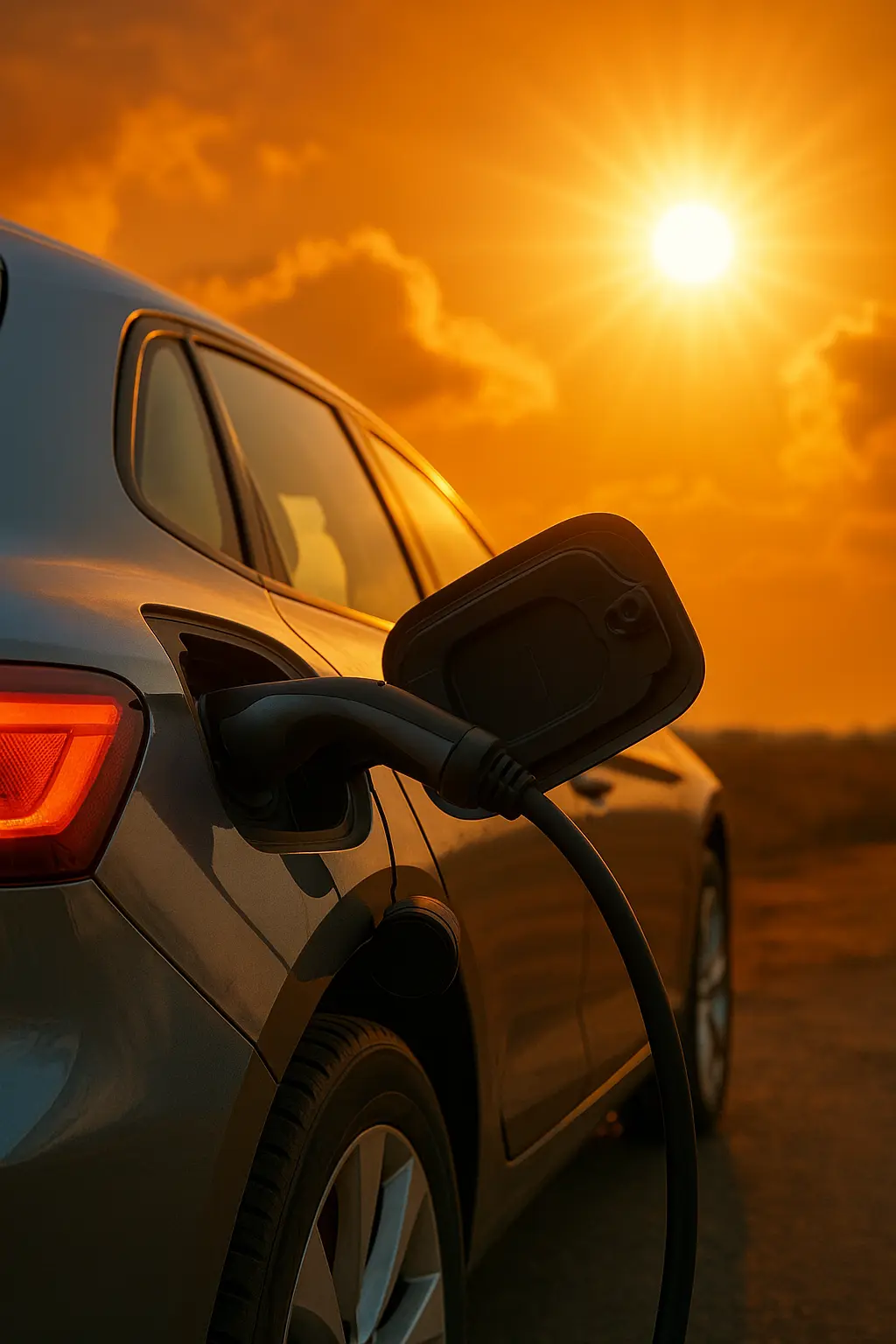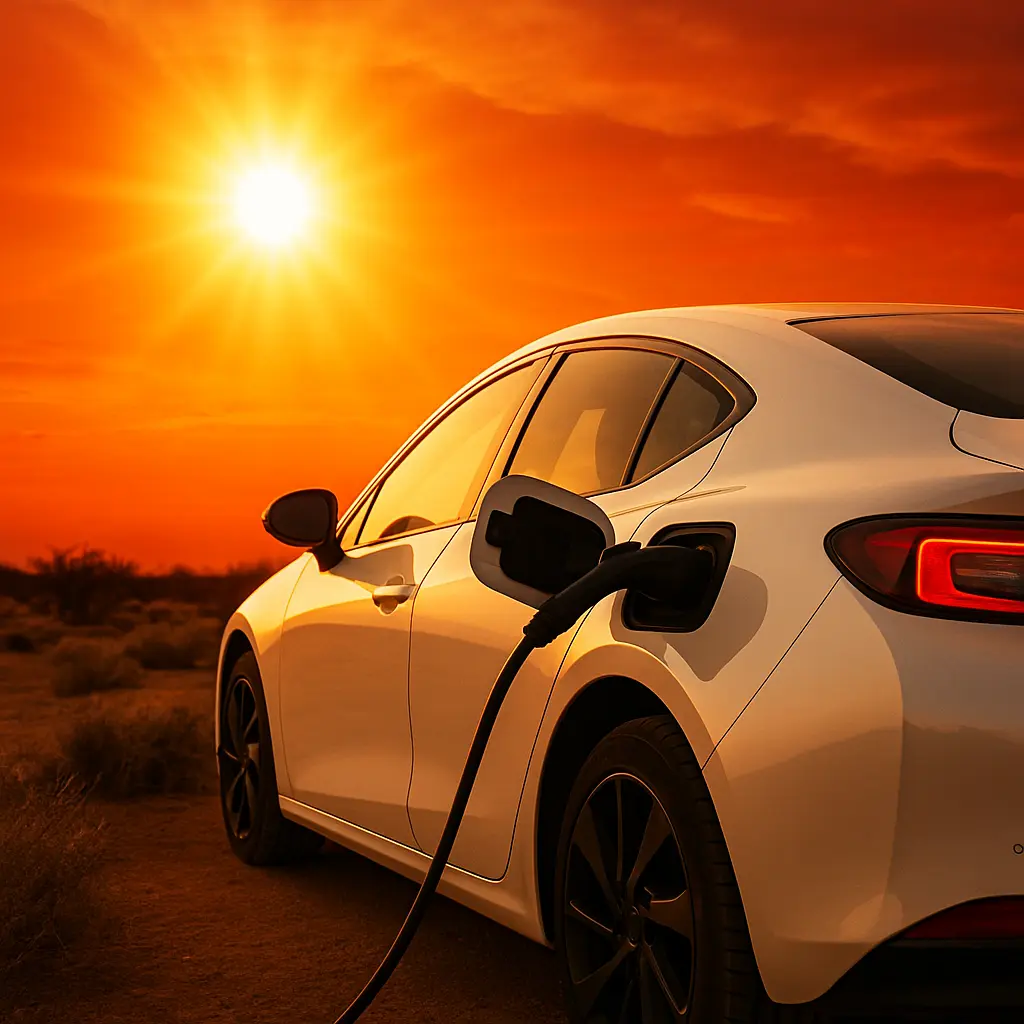How Resilient Are Car Batteries in 2025’s Extreme Aussie Heat?

Australia's climate is getting hotter. With rising global temperatures and more frequent heatwaves hitting across states like New South Wales, Queensland, and Western Australia, drivers in 2025 are starting to ask serious questions: How well do modern car batteries, especially in EVs and hybrids, hold up in these conditions? Will your electric vehicle still perform in the harsh Aussie sun? Will internal combustion car batteries suffer too?
This comprehensive guide unpacks everything you need to know about the resilience of car batteries in the face of Australia’s extreme heat—from EV battery degradation to thermal management systems and real-world performance across urban and regional Australia.
🔥 Chapter 1: Why Heat Is a Serious Threat to Car Batteries
1.1 The Science Behind Battery Performance
Car batteries—whether lead-acid or lithium-ion—are chemical devices. Their performance is heavily influenced by temperature. While cold conditions can reduce output, high temperatures accelerate chemical reactions, which can lead to:
Shortened battery lifespan
Swollen cells in lithium-ion packs
Thermal runaway risks (in extreme EV cases)
Decreased charge capacity
1.2 Why This Matters in Australia
Australia is a country of temperature extremes. In summer, it’s common to see 40°C+ days, especially in inland regions. Cities like Perth, Adelaide, and even outer Melbourne suburbs regularly hit oppressive highs. In 2025, this trend has only grown more intense. Your battery isn’t just powering the vehicle—it's also managing air conditioning, infotainment systems, and for EVs, entire propulsion systems.
🌡️ Chapter 2: EV Batteries vs. Heat – 2025 Developments
2.1 EV Battery Chemistry Improvements
Thankfully, EV manufacturers have been actively working to improve battery chemistry to make them more heat-resilient. Key developments include:
Nickel-Manganese-Cobalt (NMC) and Lithium Iron Phosphate (LFP) chemistries
Improved separators and coatings that protect battery cells from thermal stress
Higher-grade electrolyte additives that resist heat damage
2.2 Thermal Management Systems (TMS)
One of the biggest factors that determine EV battery resilience is the vehicle's thermal management system. There are three main types in 2025:
Air-cooled systems (e.g., Nissan Leaf): Less effective in high heat
Liquid-cooled systems (e.g., Tesla Model Y, Hyundai Ioniq 6): Far superior at maintaining safe temps
Active vs. passive cooling: Active cooling offers regulated temperature control, essential for Australian summers
2.3 Real-World Testing in Australia
Manufacturers are testing EVs in the harshest environments:
Tesla runs heat endurance tests in outback South Australia
Kia and Hyundai conduct temperature cycle tests in Western Australia’s remote mining towns
Polestar and Volvo measure charging degradation after heat-soaked drives across the Nullarbor
EVs from major brands are now surviving summer peak heat tests of 50°C+, with minimal battery degradation—thanks largely to these updated battery management systems.
🔋 Chapter 3: 12V and Auxiliary Batteries in Heat
3.1 Don’t Forget the Traditional Battery
Even in EVs and hybrids, the 12V battery is essential for:
Starting electronics
Running lights and sensors
Operating security systems
Lead-acid 12V batteries are more prone to:
Evaporation of battery fluid
Accelerated plate corrosion
Voltage drop under heat stress
In traditional petrol/diesel cars, these batteries are still the primary power source. With heat exposure above 35°C, the expected battery life can drop from 5 years to 2–3 years, especially in stop-start driving conditions.
⚡ Chapter 4: Impact of Heat on Charging Speed & Efficiency
4.1 Slower Charging Under Extreme Heat?
Yes—and no. Lithium-ion batteries prefer moderate temperatures when charging (typically 20–30°C). In extreme heat:
Charging may slow down automatically to prevent overheating
Fast charging could be temporarily limited or shut off
In some cases, the battery management system will divert energy to cooling rather than charging
4.2 Station Infrastructure and Ambient Temps
Charging infrastructure plays a role too:
Ultra-fast chargers now come with integrated cooling systems
Covered charging bays are becoming standard in Queensland and NT to reduce heat soak
Battery pre-conditioning before charging is built into newer EVs like the BMW iX and Hyundai Ioniq 6
🧠 Chapter 5: How EV Brands Are Adapting to the Aussie Climate
5.1 Brand-Specific Heat Management
Tesla: Advanced heat pump and liquid-cooled battery pack
BYD: Blade Battery design claims higher thermal stability
Hyundai/Kia: V2L systems and cooling algorithms adapt to outside temperatures
Toyota: Hybrid systems use compact, heat-insulated battery packs to manage thermal load
5.2 EV Warranty Considerations
In 2025, many EVs sold in Australia offer 8-year battery warranties, with specific clauses:
Thermal damage must not be user-inflicted (i.e., charging in extreme heat against recommendations)
Degradation allowances vary; some allow up to 30% capacity loss
🛠️ Chapter 6: How to Protect Your Battery from Heat
6.1 Parking Tips
Park in shade or under solar carports
Use windshield sunshades to reduce cabin heat buildup
For EVs, keep state of charge between 30% and 80%
6.2 Charging Habits
Avoid fast charging in peak afternoon heat
Use scheduled charging overnight when ambient temperatures are lower
Pre-cool cabin before driving to reduce initial battery load
6.3 Maintenance for 12V Batteries
Top up fluids in non-maintenance-free batteries
Clean terminals and check for corrosion
Test regularly in summer months—especially before long road trips
📊 Chapter 7: Comparing Heat Resilience – ICE vs. EVs in 2025
| Feature | Internal Combustion (ICE) | EVs / Hybrids |
|---|---|---|
| 12V battery degradation | High in heat | Still present |
| Performance drop in heat | Minimal | May throttle power to cool system |
| Heat-induced charging delay | N/A | Yes, possible |
| Cabin cooling reliance | Engine-driven A/C | Battery-driven (more load) |
| Battery replacement cost | $150–$300 | $4,000–$12,000 (EV) |
| Warranty | 2–3 years (12V) | 8 years (EV battery) |
🔮 Chapter 8: What the Future Holds for Heat-Resilient Batteries
8.1 Solid-State Batteries
Although not yet mainstream in 2025, solid-state battery tech is showing promise:
Higher thermal stability
Less flammable
Better energy density and lifespan
Toyota and QuantumScape are leading the charge, and some prototypes are being tested under Australian heat conditions.
8.2 Adaptive AI Battery Management
Newer systems include machine learning algorithms that:
Track local weather
Adjust charging speed and limits based on location
Warn drivers of unsafe heat zones for parking
These are being rolled out in premium EVs and expected to trickle down to mainstream models by 2026–2027.
🧩 Chapter 9: The Role of Infrastructure and Policy in Heat Mitigation
9.1 Urban Heat-Aware Infrastructure
Cities like Brisbane and Darwin are investing in:
Smart chargers with weather sensors
Solar-powered battery cooling shelters
Heat-mapping EV routes
9.2 Government Incentives for Battery Longevity
The 2025 Green Vehicle Initiative provides:
Rebates for home solar + EV charging integration
Tax credits for smart battery management upgrades
Bonus incentives for vehicles with high thermal efficiency ratings
✅ Final Thoughts: Should You Worry About Your Car Battery in 2025’s Heat?
In short: yes, but only if you’re unprepared.
Both EVs and traditional vehicles are affected by extreme Aussie heat, but the technology in 2025 is miles ahead of what we had even five years ago. With improved battery management systems, smarter charging habits, and climate-adapted vehicle designs, modern cars can survive and thrive—even in 45°C+ conditions.
What matters most is how you care for your battery, understand your vehicle’s limits, and adapt your driving and charging behavior during the hottest months.
Leave a comment
Your email address will not be published. Required fields are marked *




















